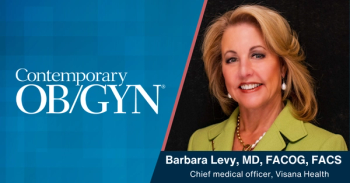
Timing of induction of labor
Is 39 the new 41 when it comes to weeks of gestation for induction of labor?
“Why not?” said Aaron Caughey, a professor and chair of the Department of Obstetrics and Gynecology at Oregon Health & Science University in Portland, who is presenting on timing of induction of labor Oct. 30 at the American College of Obstetricians and Gynecologists (ACOG)
“We know that the optimal gestational age to deliver is full-term: between 39 and 40 weeks,” Dr. Caughey told Contemporary OB/GYN. “However, some pregnancies extend beyond this point.”
Dr. Caughey said that although all women could be induced in the 39- to 40-week range, “there has been a concern that intervening will lead to more cesareans and be too costly.”
In 2006, Dr. Caughey and his associates started showing that despite most clinicians’ beliefs, perhaps early induction does not cause more cesareans. Other investigators have found similar findings, and the recent large, randomized trial, ARRIVE, demonstrated that induction of labor at 39 weeks in nulliparous women as compared to expectant management leads to a lower rate of cesareans.
“The evidence suggests outcomes are as good or better for delivery at 39 to 40 weeks gestation as opposed to waiting until 41 weeks,” Dr. Caughey said.
Dr. Caughey believes the revelation that induction of labor might actually reduce the risk of cesarean delivery will be a surprise to many clinicians. And while he has conducted some of this research, he believes that “healthy suspicion of the findings is well-founded as studies should be replicated and studied in a range of clinical environments.
For many clinicians, “when one spends time on the labor floor, women being induced have a higher risk of cesarean. Thus, when one compares women with induction to women with spontaneous labor, induction of labor does have a higher risk of cesarean,” Dr. Caughey said.
“But when one compares induction of labor to expectant management of the pregnancy in the full term (39 to 40 weeks gestation) and post-term (41 weeks gestation) periods, it appears that there are enough developments with expectant management that induction of labor does not increase the risk of cesarean.”
A 2018 cost-effectiveness analysis of induction of labor at 39 weeks of gestation versus expectant management among a theoretical cohort of 1.6 million low-risk nulliparous women found that induction of labor resulted in 54,498 fewer cesarean deliveries and 79,152 fewer cases of hypertensive disorders of pregnancy, again consistent with the ARRIVE trial. The analysis also concluded that induction of labor resulted in 795 fewer cases of stillbirth.
“Despite induction of labor being associated with increased costs, there was an increase in quality-adjusted life-years (QALYs), with an incremental cost-effectiveness ratio of $87,691.91 per QALY,” said Dr. Caughey, who spearheaded the analysis.
However, if the cost of induction of labor was increased by $180, elective induction would no longer be cost-effective.
Hence, while induction of labor in the full-term period is not a violation of the standard of care, the evidence is still evolving and local practice patterns can impact these outcomes.
“Whether individual clinicians and healthcare systems offer routine induction of labor at 39 weeks is dependent on local capacity and careful evaluation and allocation of healthcare resources, along with patient preferences,” Dr. Caughey said. “Going forward, we will have to see how early induction of labor plays out in a variety of settings.”
The ACOG 2020 Virtual Conference will be held on October 30 and 31 from noon to 4 pm ET.
__
Dr. Caughey reports no relevant financial disclosures.
Newsletter
Get the latest clinical updates, case studies, and expert commentary in obstetric and gynecologic care. Sign up now to stay informed.











